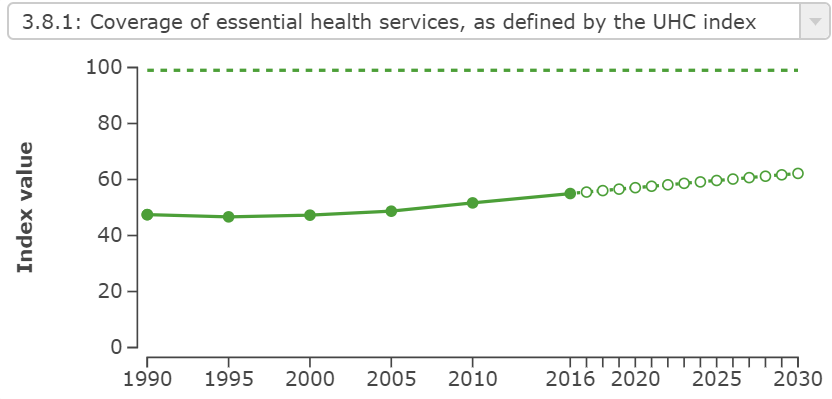Accelerating progress toward universal health coverage in Kenya
Published August 7, 2018
As part of its Big Four agenda, the government of Kenya is committed to providing universal health coverage by 2022. Reaching such an important target raises some big questions about how to accelerate progress toward this goal over the next five years. Global Burden of Disease (GBD) collaborators in Kenya are shedding light on ways that the study can help the country reach this goal.
Earlier this year, a range of stakeholders came together to participate in the Kenya Health Forum, an annual event dedicated to strengthening dialogue around health policy and providing a platform for sharing evidence, best practices, and innovations across the sector. This year’s forum focused on the theme of “accelerating progress toward universal health coverage (UHC).” It was an opportunity to bring together representatives from national and county governments, and well as actors from the private sector, academia, and civil society.
Decision-makers need actionable evidence on UHC that can help them track progress, identify priorities, and target resources at both the national and county level. In support of efforts to increase the availability of such evidence, GBD collaborators from government and research institutions in Kenya organized a skills-building session at the Kenya Health Forum aimed at familiarizing a broader audience with burden of disease analysis and its implications for UHC.
This reflects the active part GBD collaborators in Kenya have played in strengthening estimates, identifying their uses, and connecting them to other health stakeholders. In this session, they presented GBD methods and findings for Kenya, highlighting the ways in which understanding disease burden and risk factors can help policymakers respond effectively to a changing health landscape. Tracking progress against the health-related Sustainable Development Goals (SDGs) was also a key topic of discussion, particularly with regard to achieving UHC. Throughout the session, participants had the opportunity to interact with data visualizations and other tools, such as county and country profiles, that can help them to better understand these data and access key results.

Visualizing Kenya’s progress toward UHC, from the health-related SDG visualization tool: http://ihmeuw.org/4eus
“The participants were enthusiastic and eager to learn about the work done by GBD,” said Dr. Elizabeth Wangia, a GBD collaborator and organizer of the session. “Many had never heard of GBD despite being epidemiologists and monitoring and evaluation specialists! A number were interested in the subnational-level results and tools that enable a county to view a given set of indicators of interest at the click of a button.”
Dr. Helen Kiarie, a GBD collaborator and a member of the organizing secretariat of the Kenya Health Forum, noted that the health-related SDG visualization offers a platform that allows countries to easily understand the progress they are making. “The versatile visualization platform is helping us communicate more effectively to our stakeholders on where we are, and what remains to be done, toward achieving our UHC and SDG goals,” said Dr. Kiarie. Among key documents published for the forum were policy briefs by collaborators, who used these data to give a status report on UHC for Kenya.
GBD collaborators in Kenya are not only helping to improve disease burden estimates but are also ensuring that they are useful and relevant for policy, as the national and county governments continue to build on progress toward UHC